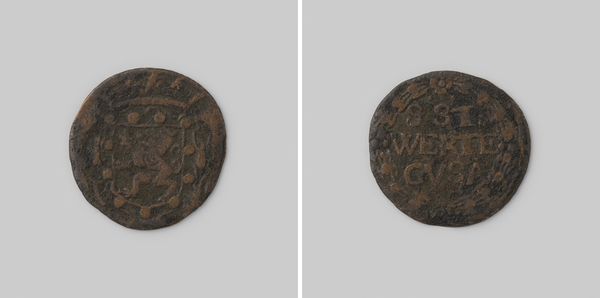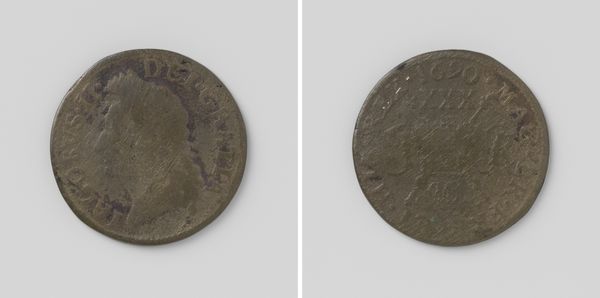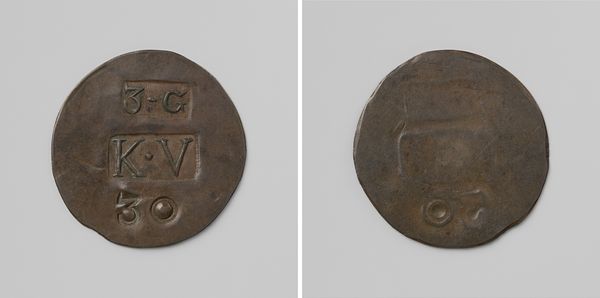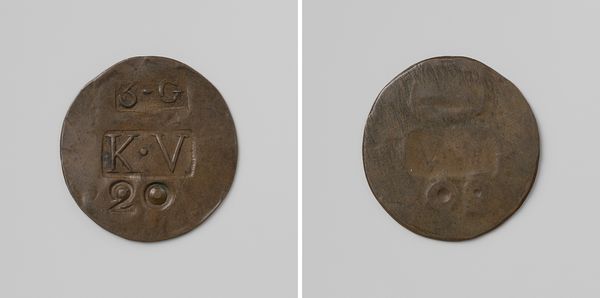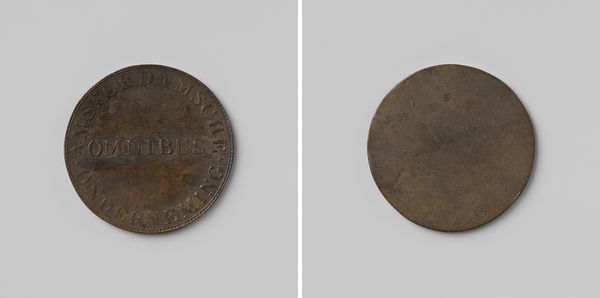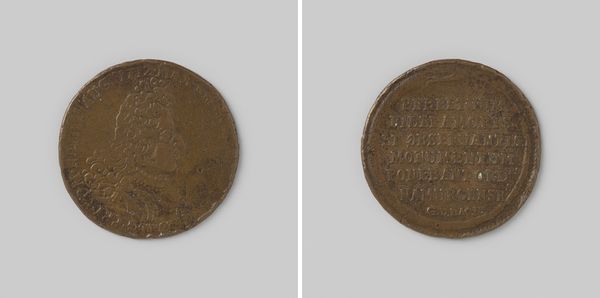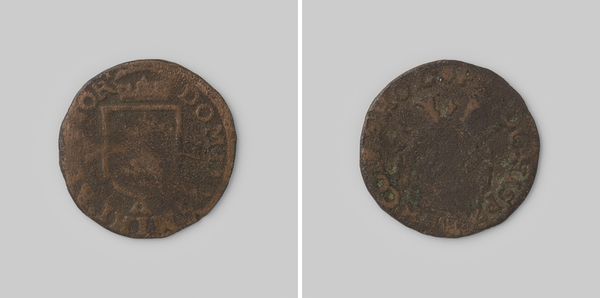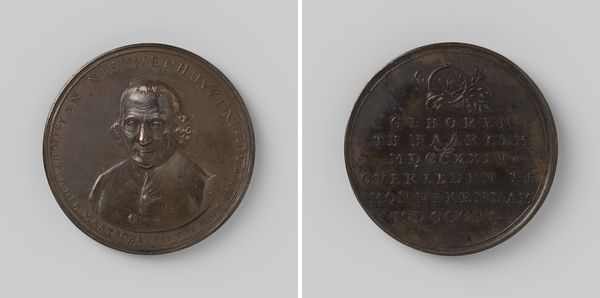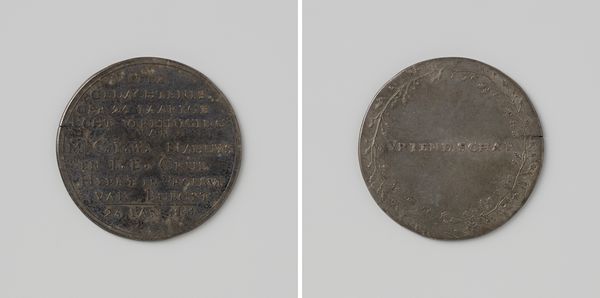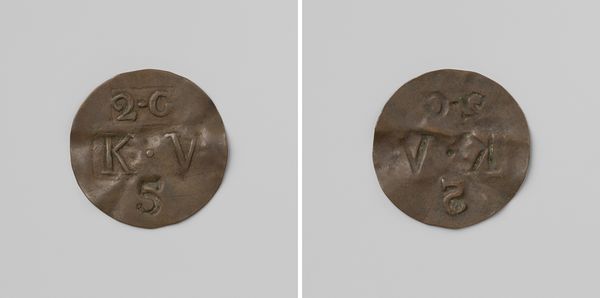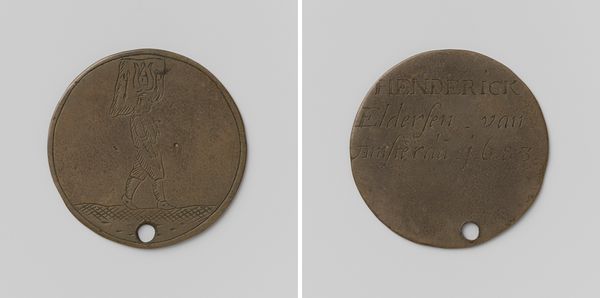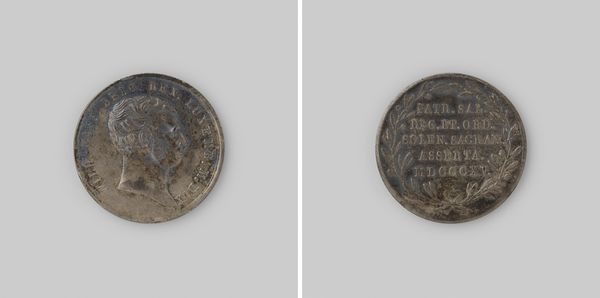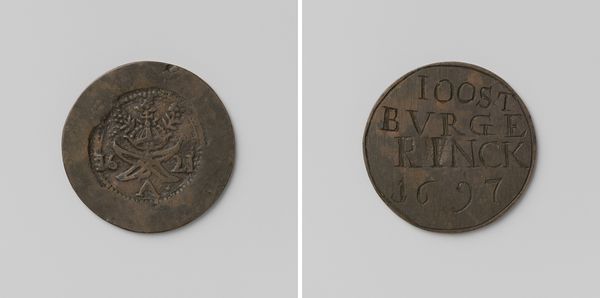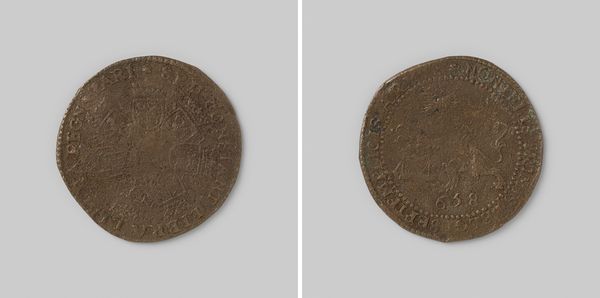
print, metal, relief
#
portrait
# print
#
metal
#
relief
#
ancient-mediterranean
#
history-painting
Dimensions: diameter 2.2 cm, weight 1.18 gr
Copyright: Rijks Museum: Open Domain
Curator: Here we have a rather humble object: the "Zutphense Duit," a coin dating back to between 1604 and 1605. Editor: It's easy to overlook, isn't it? The image presents this worn, bronze surface that feels both ancient and incredibly tactile. I can almost feel the uneven texture beneath my fingers. Curator: Precisely. Note how the relief, though eroded over centuries, still allows us to discern symbolic elements. On one side, a shield and perhaps some floral decoration; on the other, inscriptions indicative of its monetary value and origin. It's a microcosm of heraldic and economic language. Editor: The coin itself speaks to value but I think about the labor that went into its creation. The mining of the metals, the craftsmanship required to produce the die, the sheer scale of production of this object, meant for countless transactions in a growing Dutch Republic. And it’s intriguing to see the impact of handling, trade and exchange marked by its current condition. Curator: Your point highlights the broader economic networks and historical contingencies it signifies. But it is imperative to acknowledge its visual semiotics: the design elements intentionally encoded to communicate power, status, and regional identity. Look at how these motifs repeat in other art objects. Editor: Absolutely, and it reminds me of questions about its creation - what were the specific tools, who were the makers? I wonder if their signatures or particular working habits could be traced on a large set of the coins? These small details bring focus to both materials and making of art at the time. Curator: Indeed, by reflecting upon how value—both material and symbolic—gets embedded in objects like this humble "Zutphense Duit", we arrive at some broader truths about art. Editor: And maybe begin to question what kind of daily transactions involved a piece like this one—who benefitted, who did not, in ways of production. It shows how historical and artistic insights always emerge from considering these layers simultaneously.
Comments
No comments
Be the first to comment and join the conversation on the ultimate creative platform.
